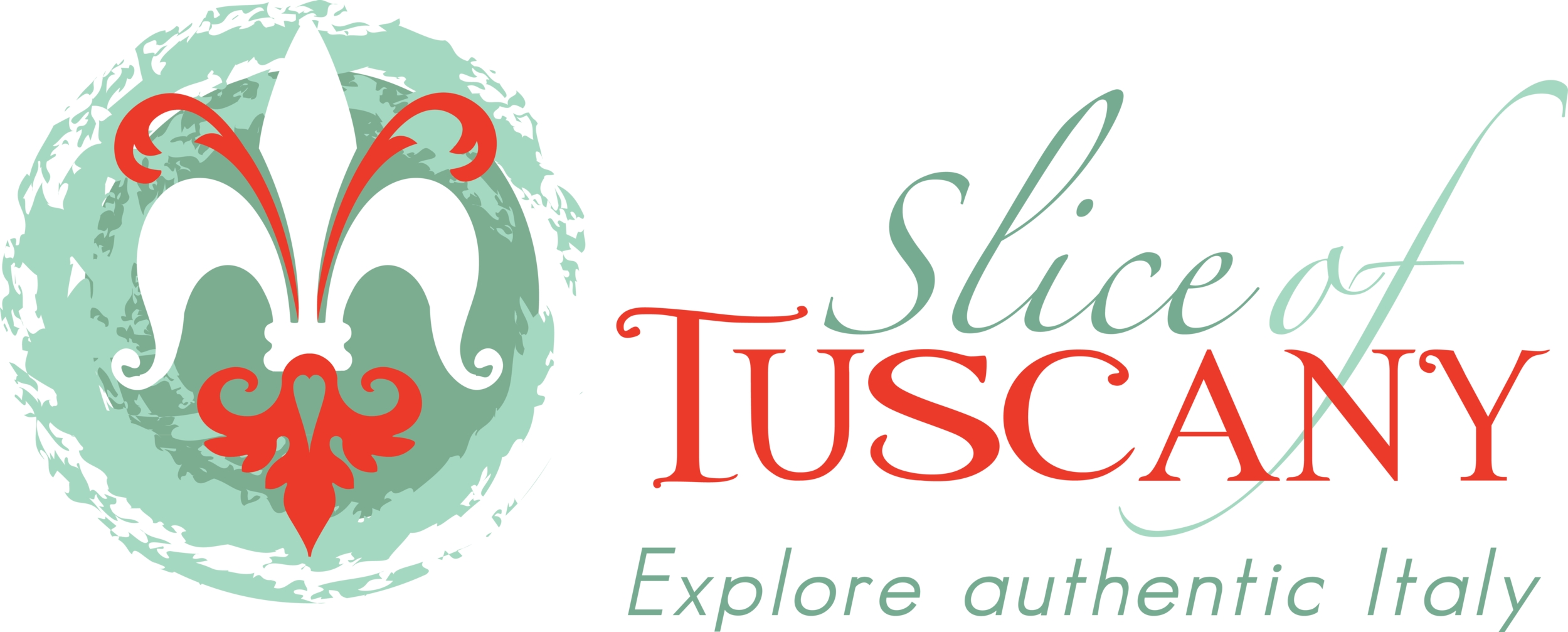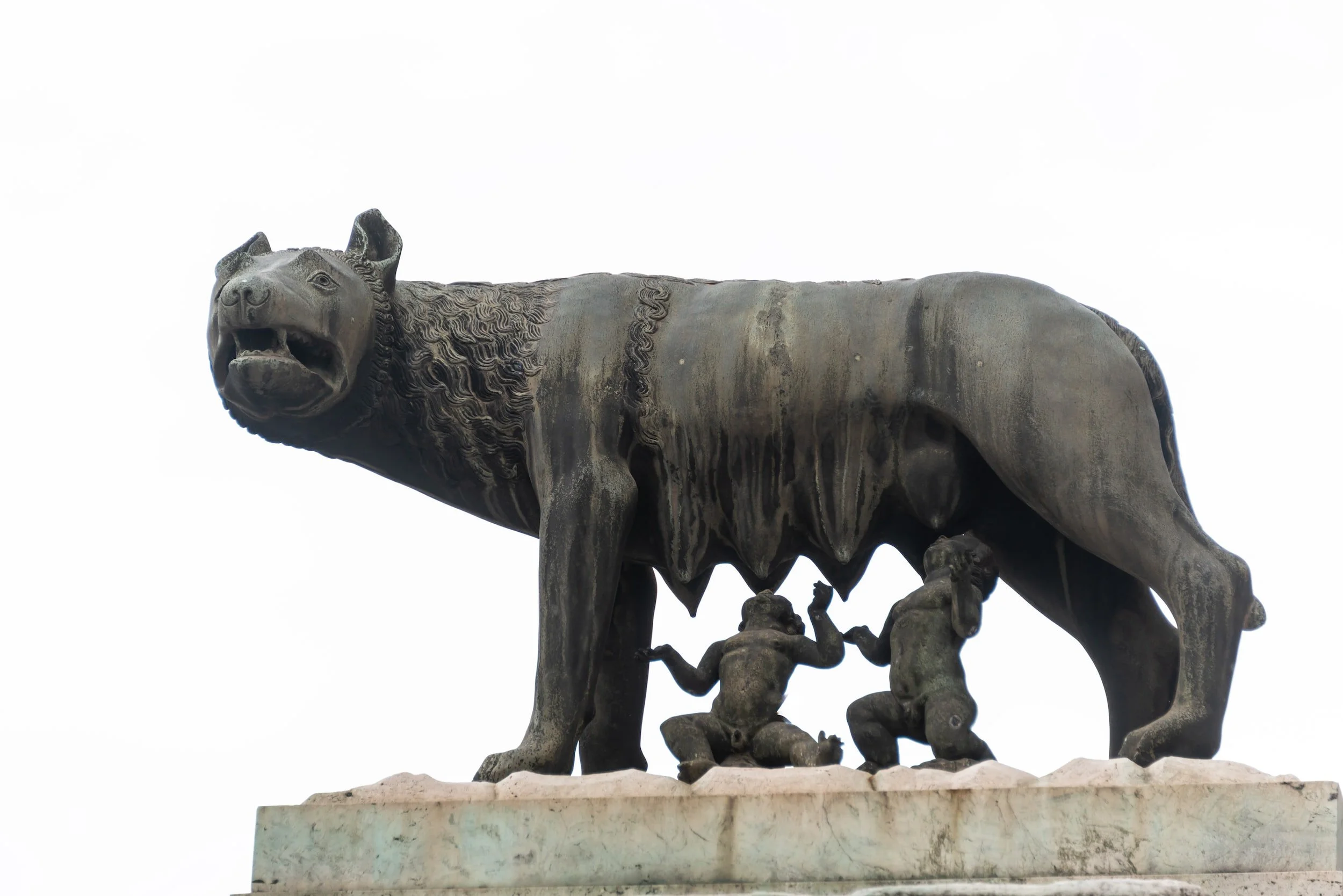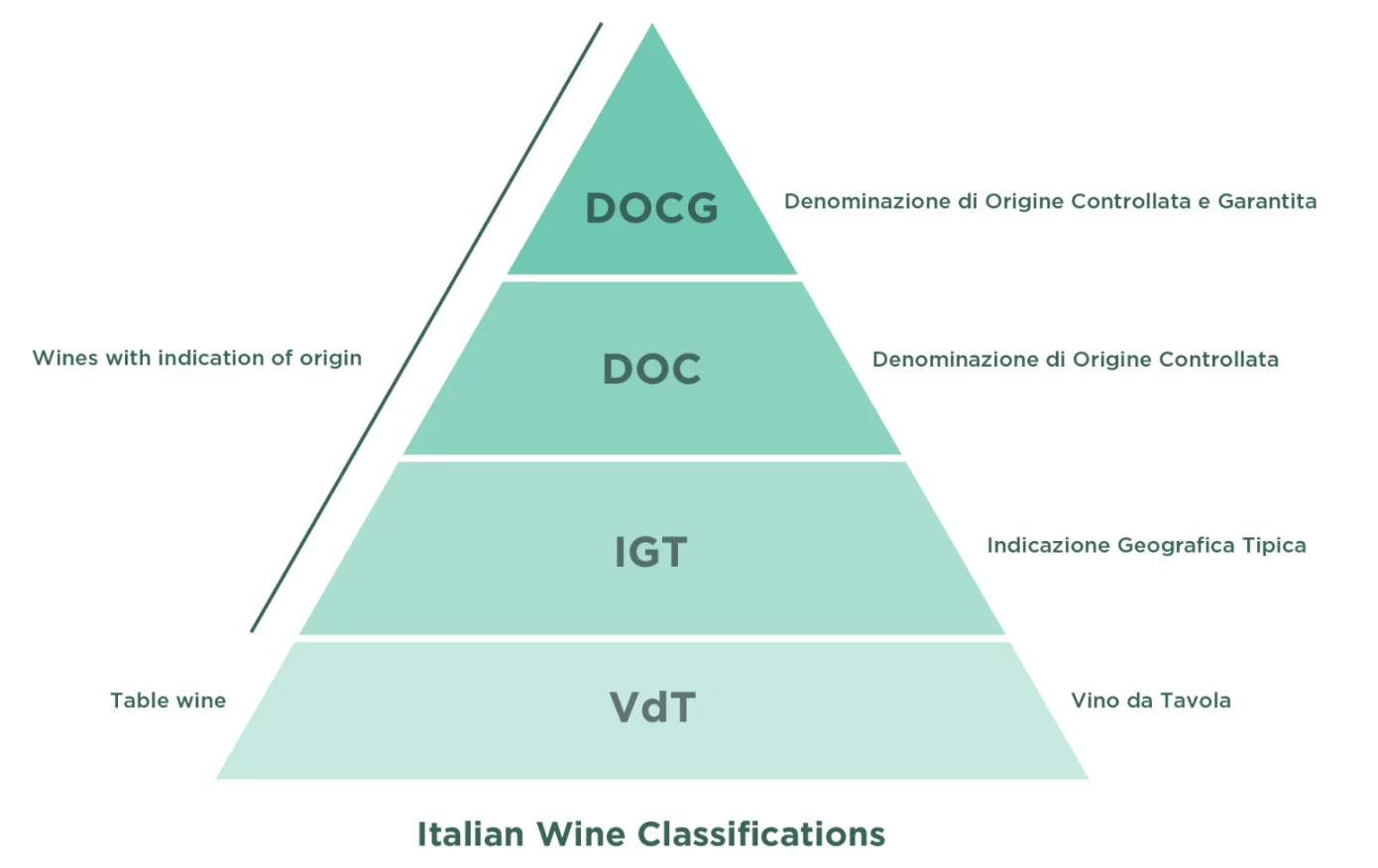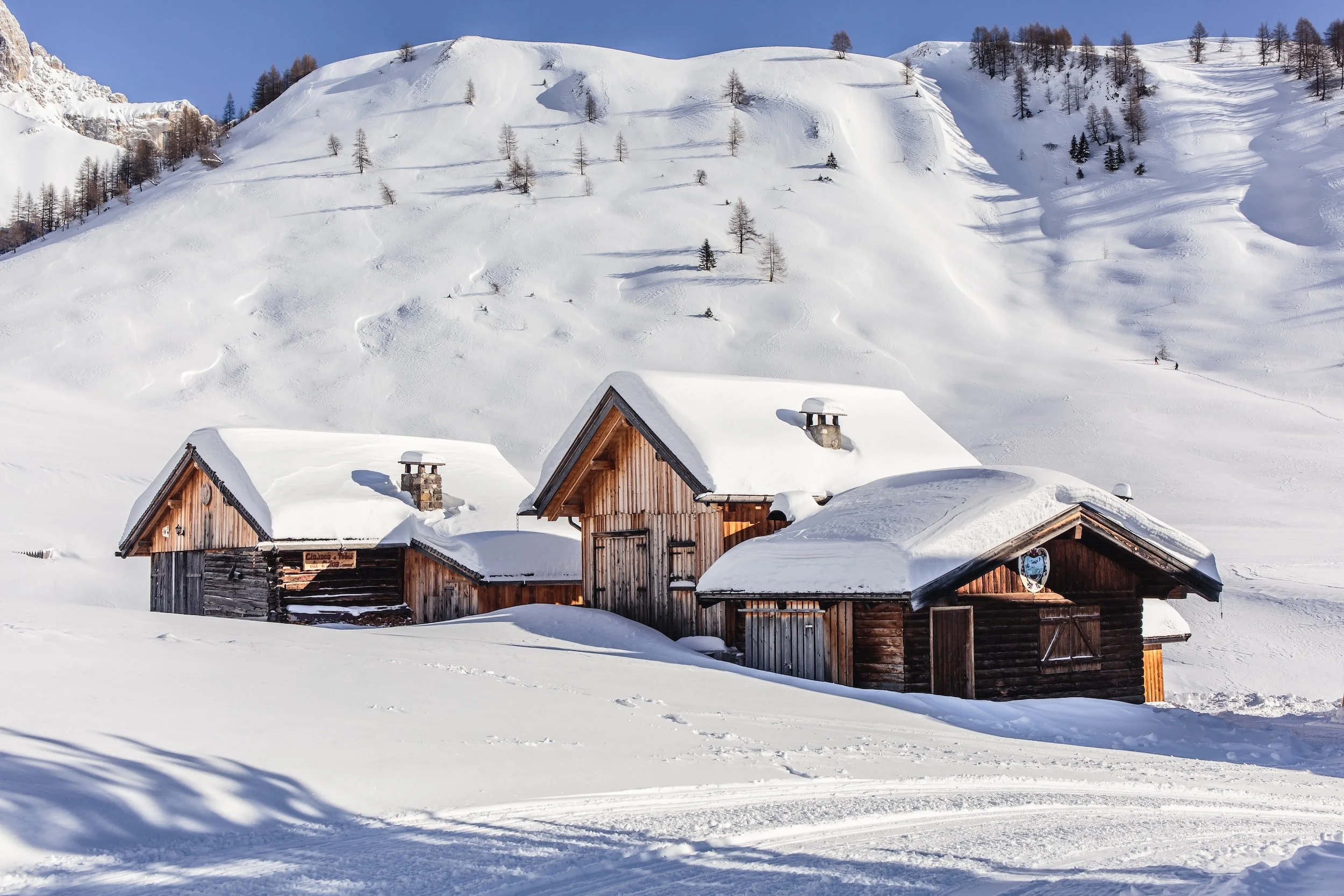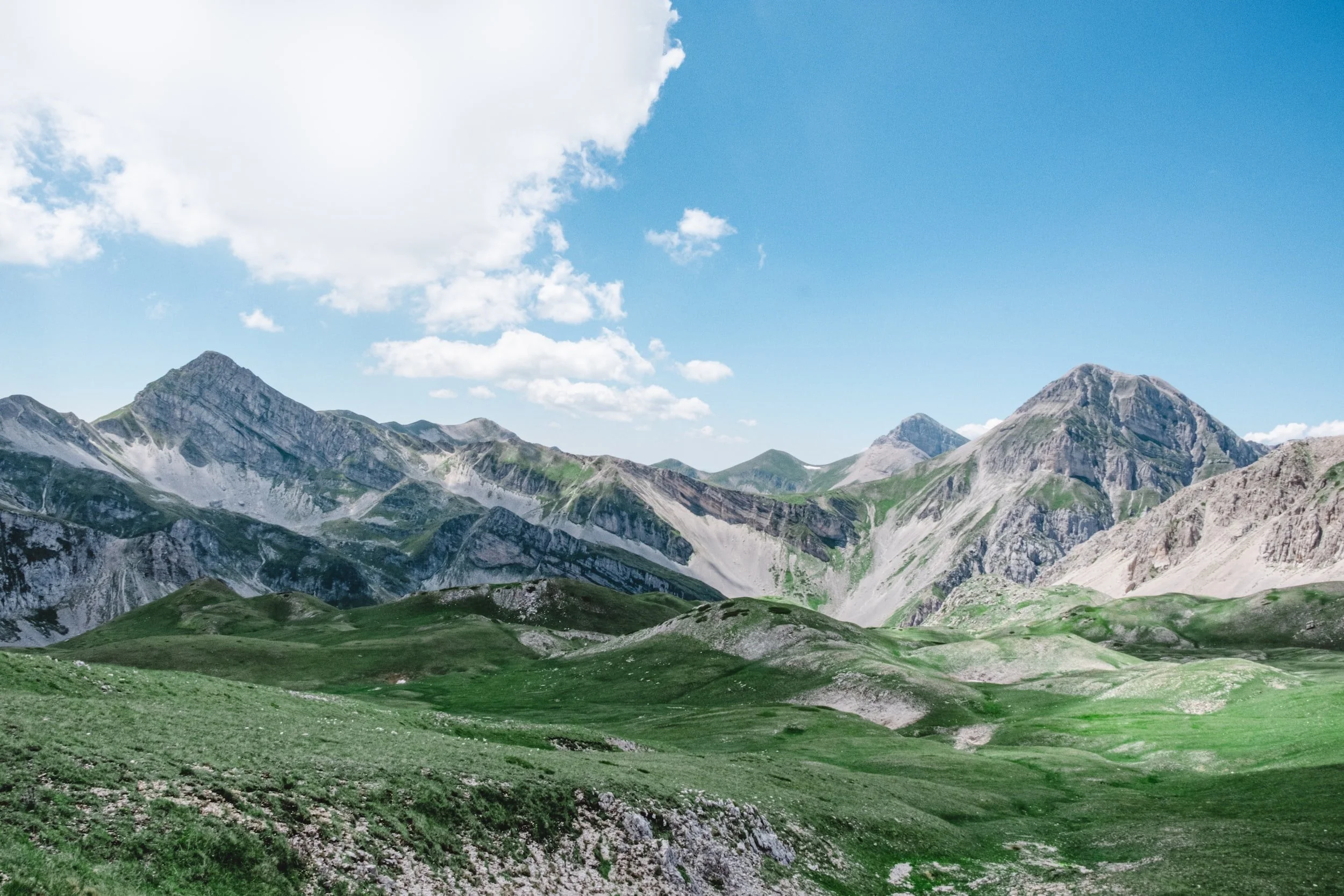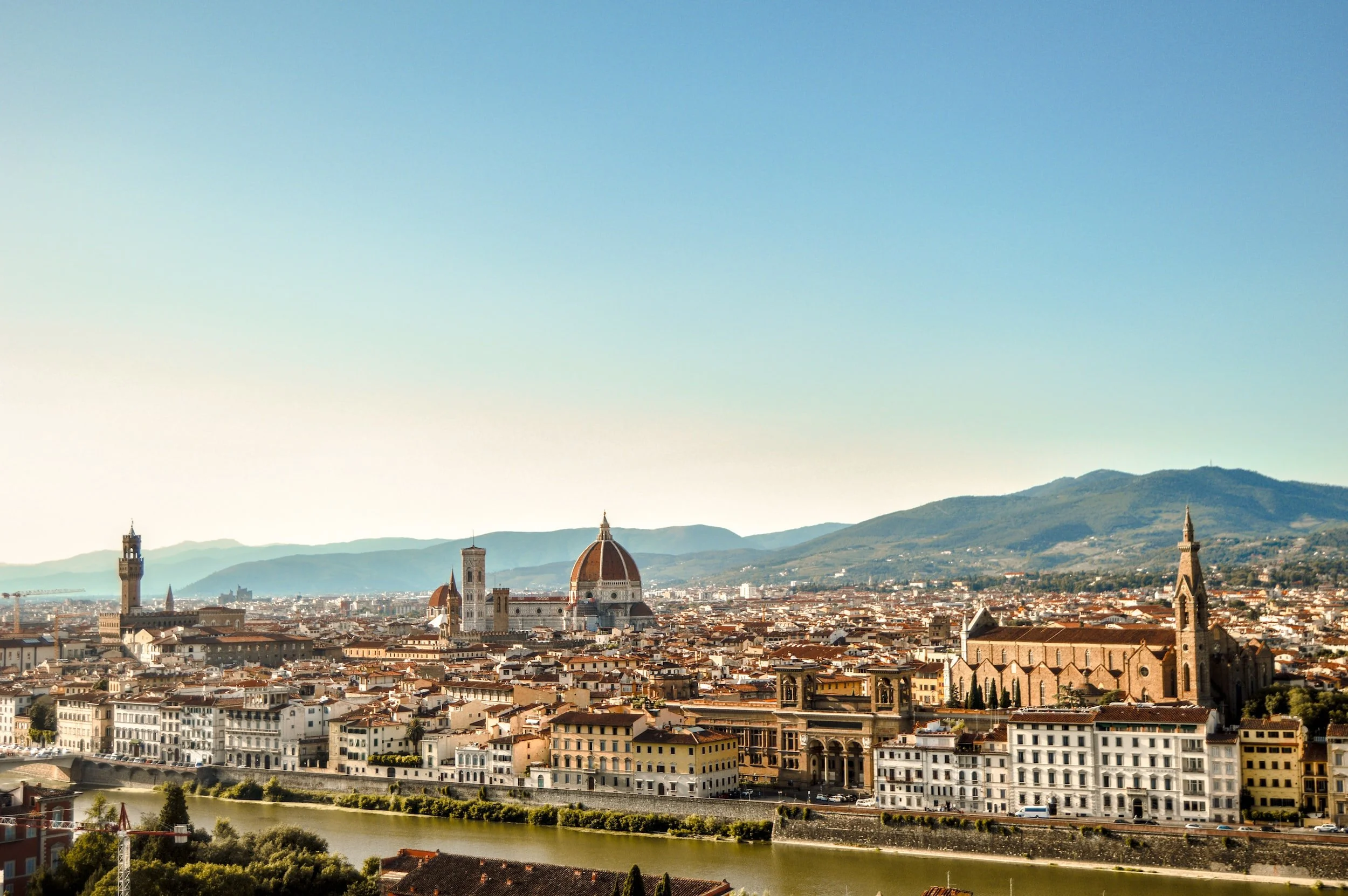Slice of Tuscany
Wine Tasting – February 25, 2023
Sally Roberts Pasquali
www.sliceoftuscany.com
sally@sliceoftuscany.com
@Sliceoftuscany on Instagram
Custom itineraries throughout Italy • Wine buying
Coming Soon! Slice of Tuscany Wine Club – subscription wine club with hand-selected wines from Italy
Italian Wine History
Ancient History
Vitis vinifera fossils 2.5 myo in Italy
Etruscans native to Tuscany and the most advanced indigenous population in “Italy” as early as 8th century BC
Alberata method of vine training
By 7th century BC had a flourishing wine trade with the coasts of France and Spain
Greeks
Arrive in Italy between 6-8th centuries BC
Oenotria = the land of the vines
Improved upon winemaking practices, i.e. the press
Dionysus = Greek God of Wine
Bacchus = Roman God of Wine
Romans
753 BC Rome was founded by Romulus & Remus
4th century BC gains power - by 3rd century BC dominated almost the entire peninsula
Adopted best techniques from the Etruscans and Greeks and improved upon them
Texts at this time begin to discuss “viticulture”
Wines were often sweet and very alcoholic. Often diluted.
Wine is being shipped all over the Roman Empire
495 AD marks the end of the Roman Empire
Middle Ages
It’s a mess and it lasts a very long time
Monks are making wine
Let’s skip this entire period from the 5th - 13th century
Renaissance
Thank goodness!
13th century marks the rise of nobile families and a demand for quality beverages
1716 the Grand Duke of Toscana, Cosimo III di Medici, issued an edict officially delimiting 4 geographical boundaries of prestigious wine growing regions. This was the first ever attempt in history of protecting the integrity of a wine appellation.
The 4 areas: Chianti, Pomino, Carmignano, Vald’Arno di Sopra
Modern Age
Italy unites in 1861 (well kind of) See this graphic by VOX
1875 Marks the beginning of phylloxera in Italy which lasts until 1920s and 1930s
War and more war
1960s is the real Wine Renaissance - wine “quality” pyramid
DOCG
DOC
Table/Generic wine
1990s second big movement in the Italian wine industry
Introduction of IGT
Italy Today
20 Regions - most have a coastline
35% mountains, 42% hills, 23% plains
Alps and Apennines
Tyrhennian & Adriatic seas
Varying climates and microclimates
Calcareous marl, volcanic and sedimentary soils
Tuscany
Tuscany from “Etruria”
67% hills, 25% mountains, 8% flat
Responsible for 6% of Italy’s overall wine output
90% is red
Sangiovese = 60% of all plantings
DOC/G = 65% of wine produced; IGT about 30%
11 DOCG zones and 41 DOC zones
Carmignano ——>
Chianti Classico ——>
Cortona ——>
Cortona DOC & Tenimenti d’Alessandro Il Bosco Syrah 2018
Cortona and its DOC
Border of Tuscany and Umbria - Lake Trasimeno
Mostly a tourist destination - Under the Tuscan Sun
Northern Rhone-like microclimate – Syrah & Viognier
DOC status in 1999 for Syrah, Sangiovese and Merlot
Tenimenti d’Alessandro
30 hectares (75 acres) purchased in 1967 - certified organic in 2016
2013 purchased by Filippo Calabresi - owner and hands-on winemaker
Resort - spa - restaurant - wine tours and tastings
THE WINE!
100% Syrah
290-300m elevation on mostly clay and limestone
1992 was its first year
Harvested in early September
30-45 days in skin contact
Ages 24 mos in 34-hectoliter used oak barrels then 12-18 months in bottle
Annual production 15,000 bottles
Notes – Complex and earthy. Coffee, cocoa bean, cigar box, Mediterranean herbs. Ready to drink now-ish
Carmignano DOCG & Capezzana
Carmignano
Medieval village about 15 miles west of Florence
Named in the Bando of 1716
Vines and wines for 3,000 years
Historic use of Cabernet Sauvignon and Cab Franc - unique in Tuscany - thanks to Queen of France, Catherine de Medici in the 1500s
Cabernet Sauvignon was called “uva Francesca”
Area gained DOC status in 1975
Ugo Bonacossi, owner of Capezzana, helped area gain DOCG status in 1988 - smallest in Tuscany and helped resuscitate the use of Cabernet Sauvignon in the 1950s
Carmignano DOCG status says min 50% Sangiovese + 10-20% Cabernet Sauvignon or Franc (+ a max % of other grapes allowed, i.e. Merlot or Canaiolo) – In practice, most are 70-90% Sangiovese with the rest being Cab Sauv.
Min 8 months in oak or chesnut
Riservas must be aged min 3 years with 12 mos in wood
Florentine state archive document from 804 AD shows wines and olive oil were produced here as far back as 1,200 years ago
1475 Monna Nera Bonaccorsi built first “Nobleman’s” house along with 9 farm houses and the wine-making building
Owned by several noble families over the next several hundred years, each expanding the holdings
1920s - Count Alessandro Contini Bonacossi purchased the property – 5 generations
1925 - First vintage
1945 - Alessandro’s son, Ugo, started to take over and revolutionize the wine making on the farm - helped the area gain its own DOCG status - the smallest in Tuscany
The villa today
Renaissance-era villa with historic cellars dating to the 1500s
Frantoio for olive oil production
Vinsantaia making its legendary vin santo
Fermentation room built in 1938
Received organic certification in 2015
Led by the 4th and 5th generation Bonacossi family
Wine tours and tastings, cooking classes, special events, etc
THE WINE!
1925 First vintage
Flagship wine of the Capezzana Estate
150-200m south/southwest facing slopes of clay schist and limestone
80% Sangiovese (harvested end of Sept) + 20% Cabernet Sauvignon (harvested first part of Oct)
Fermentation in stainless steel tanks, malolactic fermentation in wood - French tonneaux
Ages in barrique (225L) and 3.5hl large oak barrels for a combined 12 months
Ages in bottle for at least 12 months before release
14.% abv
52,000 bottles a year
Serve with most meats and cheese
Notes - Deep ruby red, fruity and spicy aromas - black cherry, raspberry, good acidity and tannins, long finish
Chianti Classico DOCG & Poggio Scalette Il Carbaione 2019
Chianti Classico
40-mile long stretch between Florence & Siena
Highlighted in the Bando of 1716
Separate from “Chianti” which is a much larger area
Mostly hilly - 80% with elevation between 650-1500 ft elevation
DOC status in 1967 and DOCG in 1984
Historically most wines were made from canaiolo
Baron Bettino Ricasoli (1800s) - experimented and came up with 70% Sangiovese + 15% Canaiolo + 15% Malvasia
Currently: Min 80% Sangiovese (can be up to 100%)
Poggio Scalette Il Carbaione 2019
Lamole - just east of Greve on hillsides with dry stone terraces
1991 - Vittorio Fiore, one of Italy’s most famed winemakers, discovered the abandoned property
Il Carbaione is a section of the land replanted after WWII with rare clone “Sangiovese di Lamole” - vines are 90 years old
Vittorio Fiore dedicates this wine to Tuscany and to Sangiovese — the region and the variety that have allowed him to fulfill his aspirations to produce superb wine.
THE WINE!
450m above sea level in sandy, rocky soil on terraced hillsides facing west/southwest
Grape = 100% Sangiovese di Lamole
First produced in 1992
Harvest in early October - 12 days in stainless steel tanks - 14mos in 350-liter oak tonneaux + min 6 mos bottle aging
14.5% abv
Notes: Full bodied, rich and with great aging potential. Dark berries and fruits, tart/sour cherries, blackberries, currants and plumbs with smooth tannins and a long finish.
Aging potential - 2034
Pair with Bistecca Fiorentina, lamb chops, foie gras
Pop quiz! This meets all the criteria to have a DOCG label. Why doesn’t it have one? What would this wine by considered?
